Yes, there is tremendous scope for growth of the so-called secondary sector, provided all the infrastructure development programmes of the government are implemented. And the government is also taking note of the pivotal role this segment can play in the country’s economic development. But raw material costs, especially iron ore and coal, which constitute 80 percent of the production cost for the DRI players, are a bother, Deependra Kashiva, Executive Director, Sponge Iron Manufacturers Association (SIMA), tells Madhumita Mookerji.

What has been the share of the secondary producers in India’s total steel production for the past three years? Going forward, how are things likely to pan out for this sector in terms of contribution to India’s steel production.
At the outset I would like to say that the term secondary is not a standard one, because this industry began to take shape from the early 1970s and at that time there was restriction on creation of steel capacity through integrated steel plants (BF-BOF route). Therefore, the government realised there was a need to create more steel production and processing capacity and started giving licences for the production of steel through the electric arc furnace route and steel processing units for long products, hot and cold rolled flat steel products, galvanising and colour coated flat products. At that time, the basic raw material used to be supplied by Tata Steel and Steel Authority of India (SAIL). But, since these units were not producing the steel and steel products from iron ore but through the already produced steel, they used to be called secondary producers.
You may have noticed that the National Steel Policy, 2017 has not used the term secondary producers. It has, instead, used the term medium, small and micro enterprises (MSME).
Production from this segment has ranged from 50-57 percent in terms of crude steel production over the last 3 years.
How do you see DRI production in FY18 against the backdrop of a decline in output in FY17?
Around 25-30 million tons (mt) of crude steel used to be produced by the so-called secondary producers and these units were importing on an average 5 mt of scrap, though this had shot up to 9 mt in 2014-15 in addition to indigenous steel melting scrap and DRI.
We expect that DRI production in the country in FY18 should increase by at least 5 percent.
This story is from the October 2017 edition of Steel Insights.
Start your 7-day Magzter GOLD free trial to access thousands of curated premium stories, and 9,000+ magazines and newspapers.
Already a subscriber ? Sign In
This story is from the October 2017 edition of Steel Insights.
Start your 7-day Magzter GOLD free trial to access thousands of curated premium stories, and 9,000+ magazines and newspapers.
Already a subscriber? Sign In

Steel's Net Zero mission
The country’s commitment to achieving Net Zero within a targeted timeframe will now propel its steel sector towards a sustainable future in line with global trends.
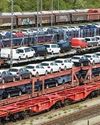
Fuel Price Hike, Supply Chain Disruption Hurt Festive Sales
Supply chain disruptions and fuel price hikes have hurt festive sales in a big way as most auto majors posted decline in sales in October.
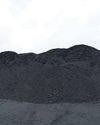
Seaborne coking coal offers remain range-bound
Seaborne coking coal offers moved in a narrow range in October amid global supply tightness and healthy spot demand.
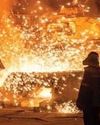
Global crude steel output down 8% in September
China manufactured 74 mt in September, fall of 21% y-o-y while India’s production went up by 7% to 10 mt.
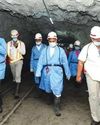
MOIL embarks on expansion projects
“Even though our country is blessed with manganese ore reserves, we import 50% of the domestic requirement. We have to lower our import dependence and save precious foreign exchange.” Ram Chandra Prasad Singh, Steel Minister

Iron ore handled by major ports down 17% in H1
The 12 major Indian ports handled 27 mt of iron-ore during H1 of 2021, down by 17% from 33 mt recorded for the corresponding period of previous year.
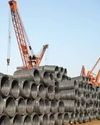
Shrinking China output to boost India exports
“In the third quarter of 2021, the company actively responded to the pressure from external policies, such as production curtailment and dual control system on energy consumption and intensity, as well as coal resource shortage and surging prices.” Baoshan Iron and Steel Co Ltd
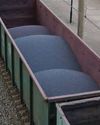
Indian Railways' iron-ore handling up 25% in H1
Indian Railways in April-September of 2021 (H1) transported 84 mt of iron ore, up by 25% over 67 mt during April-September 2020.
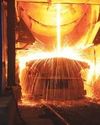
September crude steel production up 7.2% y-o-y
India’s crude steel production in September 2021 grew 7.2 percent to 9.547 million tons (mt) over September 2020 but was down by 3.2 percent from August 2021 output, provisional steel ministry data showed.

“Five enablers: way forward to sustainable cleaner steel”
Right and scalable technology, appropriate policy guidance by government, access to finance to fund transition, willingness of customers to pay for cleaner products and infrastructure for use of new technologies are the need of the hour for the sustainable and cleaner steel industry, according to Madhulika Sharma, Chief Corporate Sustainability, Tata Steel.